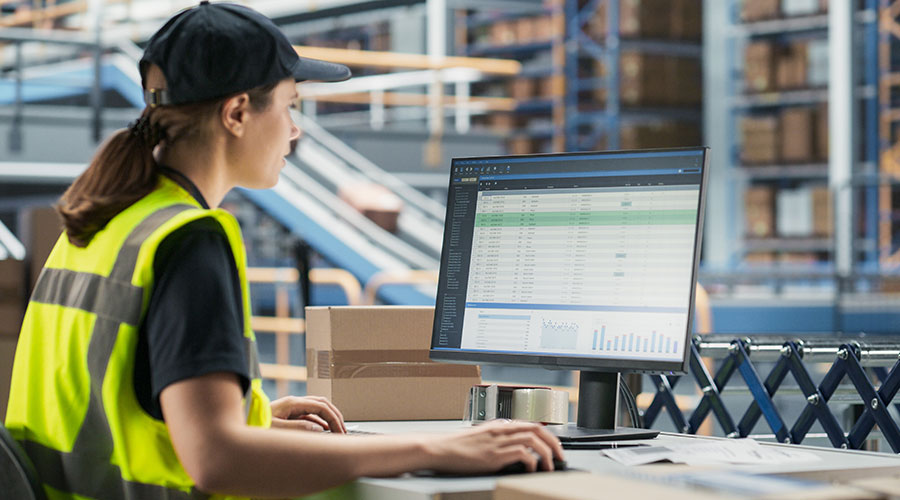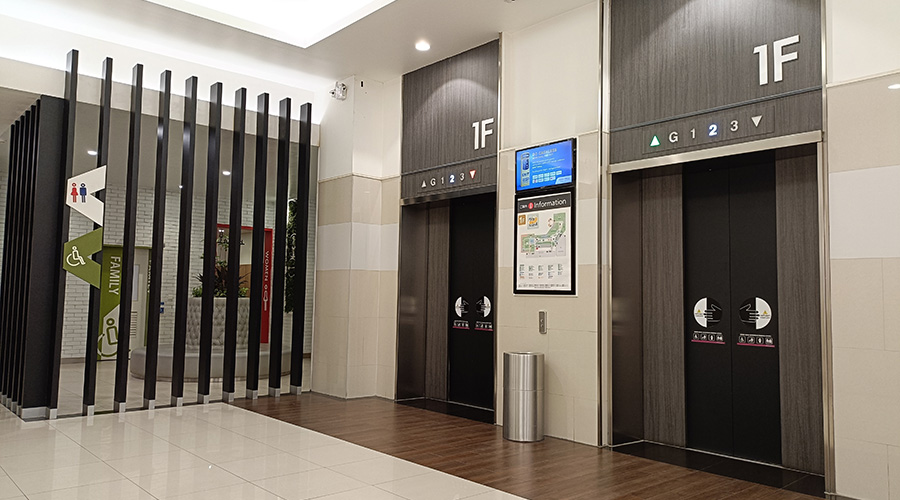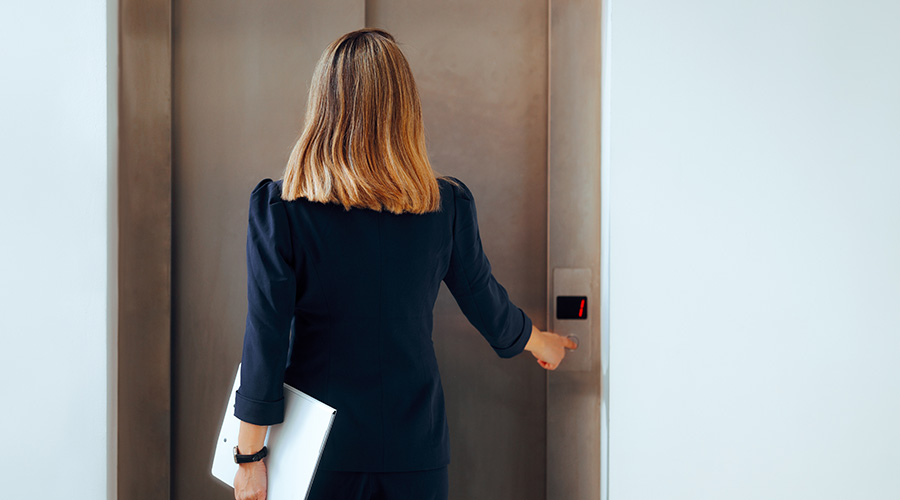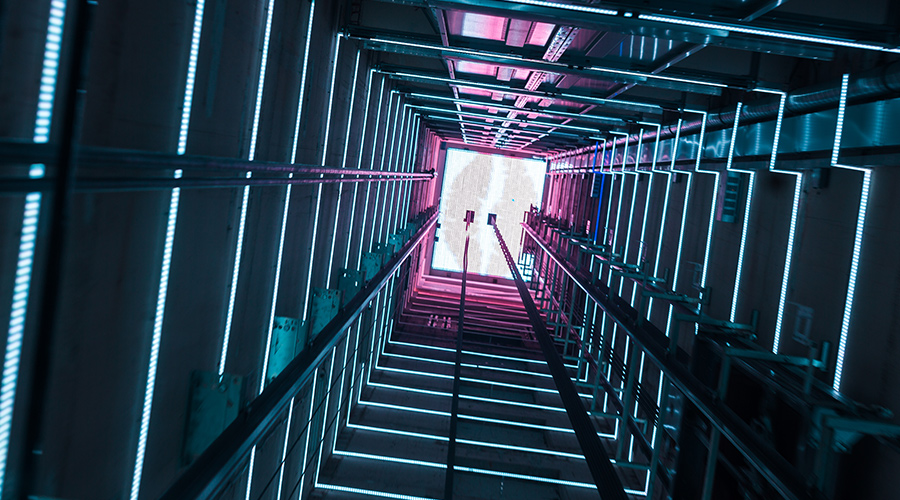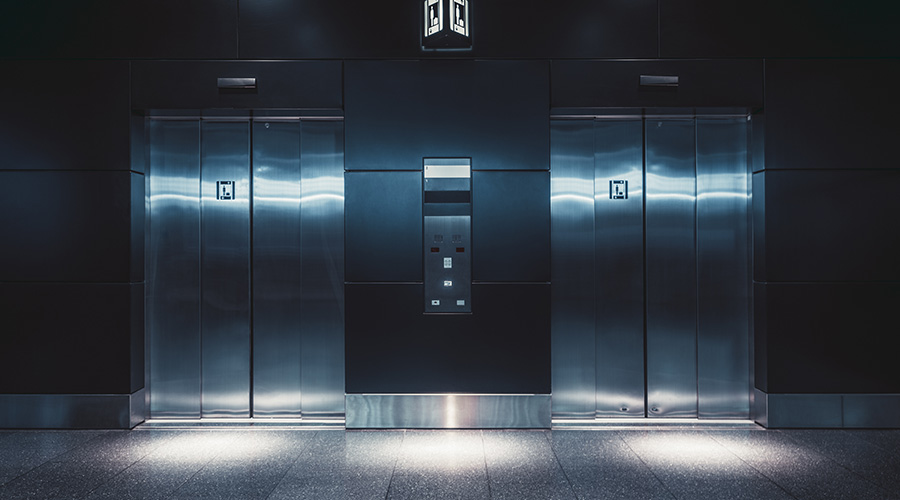Elevators Moving Up On Energy Efficiency
Developments in elevator technology are making vertical transportation more user- and facility-friendly
Long gone are the days of mechanical floor indicators above the doorways of lobby-level elevators. Gone, too, are the bellmen who actually operated elevators. And soon enough, elevator controls inside the cab might also fade into memory.
While the rest of the world has been using cutting-edge elevator technology for the better part of a decade or more, building codes in the United States have prevented some of the technology from reaching our shores – until recently. Changes in code are paving the way for new elevator technologies, particularly for facility executives in high-rise office space.
Time-efficient dispatching systems, space- and energy-efficient drive sheaves, and in-car TV screens are increasingly appearing in more new construction projects.
Today’s elevators, particularly in high-rise space, rely upon complex dispatching systems to shorten wait time for elevator passengers.
Destination-based dispatching systems were first pioneered in the 1990s by Schindler Elevator Corp., following the surge of increased microprocessor capacity during the 1980s. Generally, dispatch systems rely on a central control panel located in the building’s lobby. As people enter the building, they enter a destination on the control panel. Computer processors then match floor requests to elevators. A visual indicator or annunciator alerts passengers waiting in the lobby which elevators will service their destination.
Most destination-based dispatch systems can have control panels located anywhere facility executives deem appropriate. “Touchpads can be located in the lobby and at each floor, and they can also be in the car,” says Jeff Crusham, senior product manager of new equipment for Otis.
But increasingly elevator cars that are part of dispatch systems have no in-cab controls. All destinations are entered at panels near the bank of elevators. Elevator company representatives say that the systems are simple to use after just one time — but warn that the first experience can stymie tenants or building visitors.
Some dispatching systems take into account additional data beyond the mere destination, using an individual’s personal information to tailor the dispatching system. With the Schindler ID system architecture, passengers use a badge, PIN code, key tag or other electronically readable device that is programmed with personal details. The system then assigns an elevator car based on that information — a feature that is particularly helpful for passengers with disabilities.
The ID system works in conjunction with the company’s Miconic 10 destination control system. Security functions can be added to that system. For example, when a visitor or tenant enters a location that requires a security clearance, the kiosk will prompt the user for security approval.
“If it’s a locked-out floor, people need to show their keycard to a proximity reader,” says Niki Saloio, manager of destination products for Schindler. “Transponders are available on everything from keycards to key fobs to watches.”
Schindler’s dispatching system allows facility executives to assign specific elevators to tenants. “Because this system can account for personal information, it will separate people and only allow access to specific elevators,” says Saloio.
“To show the improvement in performance from dispatching systems, we can run a computerized traffic simulation,” says Saloio. Schindler accounts for the building populations and equipment specifications — such as door cycling times — to evaluate the handling capacity of the existing elevator system. That conventional system is then compared to the company’s Miconic 10 system.
Flexibility is part of what makes dispatching systems popular in high-rise spaces. Because the algorithms that govern car movement are programmable, dispatching systems can be custom-tailored to individual applications. Cars can be “ganged” during high-traffic periods of the day — at lunchtime, for example. By accommodating specific facility needs, manufacturers claim that dispatch systems can save time, reducing passenger wait and travel times by as much as 30 percent.
Machine-room-less Elevators
Elevators designed during the bulk of the 20th century required large motors and sheaves. Typically, the equipment is so massive that most architects create a dedicated machine room that sits above the hoistway and houses the equipment. Most commonly — due to size and other considerations — these machine rooms go atop a building’s roof. Because the machine room often needs to be eight feet tall and capable of supporting a thousand pounds of machinery, the rooms frequently add significant expense to construction costs.
Machine-room-less elevator systems are now more common. They account for 75 percent of installations worldwide, says Andrew Ites, product manager at KONE. In the United States, 25 percent of installations are machine-room-less systems, according to Ites.
KONE introduced its MonoSpace machine-room-less elevator in the mid-1990s. It is based on the company’s EcoDisc hoisting machine, which is attached to the guide rail and uses about 40 percent less energy than conventional traction machines and produces less heat, according to the company. The controller is built into the front wall of the top landing.
Otis’ newest system, the Gen2, uses an in-hoistway motor and sheave system. The smaller footprint is made possible in part by the use of smaller, more flexible cables. Rather than the traditional braided steel cables found on many electrically powered lifts, the Gen2 system uses a band of ultra-thin cables encapsulated in a polyurethane sheath.
According to company officials, the new belt system is approximately 20 percent stronger than traditional cables and has twice the longevity of their original steel cables. The entire system is also smaller as a result. The flexible belts allow for a 4-inch diameter drive sheave rather than the 30-inch diameter sheave required for the company’s geared traction or gearless traction elevator systems.
ThyssenKrupp also uses a downsized motor and sheave. Thanks to the system’s diminutive size — 18 inches square by 3 feet in length — the equipment sits to one side of the shaft, several feet down from the top of the hoistway.
Stuart Prior, ThyssenKrupp’s executive vice president for product sales and marketing in the Americas says modern machine-room-less technology may not require less maintenance, but servicing the components of those systems is easier than climbing into a rooftop cabinet.
When elevator systems need servicing, today’s companies send company technicians to perform the service. With machine-room-less equipment, technicians have to enter the elevator shaft.
“The top of the car typically becomes a work platform for the mechanic,” says Ites. “The car can be locked in place in order to provide a safe work environment.”
Saving Energy and Money
Imagine the power that’s required to lift a heavy car. Now imagine the energy required for a car carrying nearly two tons of passengers. That power consumption is why counterweights are often used to offset the weight of the cab and passengers.
“You might as well let gravity do some of the work for you,” says Crusham when helping explain the enduring presence of counterweights in modern hoistways.
Similarly, engineers at elevator companies figure that all the heat generated by motors and sheaves might be put to good use, too. One option on Otis’ Gen2 system is a regenerative drive. Regenerative drive systems help recapture some of the heat generated by elevator motors and feed it back into a building’s electrical system.
In ThyssenKrupp’s Synergy system, energy is regenerated via software in the permanent magnet motor drive.
Prior says that these systems save money in other ways. “The smaller motor generates less heat, and most manufacturers do not require forced conditioned air for the units, which also saves money.”
In-car Media
Piped-in elevator music has new media to compete with: television screens. A value-added proposition for facility executives in metropolitan areas, flat-panel screens in elevator cabs can be used for many purposes — from delivering the day’s headlines to advertising the new Starbucks on the corner. They can be used to welcome new tenants to a building or explain the renovation on the 33rd floor.
“Our installation teams visit the sites and plan for the best placements of these screens,” says Jim Harris, chief executive officer of Office Media Network.
Office Media Network delivers news from the Wall Street Journal. Another company, Captivate, runs information from CNN, ABC, the Associated Press, Gannett, and other outlets. “We run 15-second news loops from a variety of so
TECHNOLOGY
How Elevators Can Improve Security
In today’s security-conscious world, elevator companies know that improving life-safety and security might be more important to facility executives than shaving seconds from a tenant’s daily elevator ride — or saving energy costs.
Recent elevator innovations can be a secondary ring of security for buildings. For example, dispatching systems can help restrict access to certain floors. The same electronic devices that carry personal information can also limit access to specific floors. When scanned upon entry to a building, the keycard integrates with the elevator dispatch system and can be set to call elevators that go directly to the floor for which the cardholder has clearance.
“Our system integrates directly with the existing security system,” says Jeff Crusham, senior product manager of new equipment for Otis, “so the level of security granted is up to building management.”
“We can use any number of identifying devices,” says Stuart Prior, ThyssenKrupp’s executive vice president for product sales and marketing in the Americas, “from keycards to codes, to infrared beams.
The potential for these systems is widely varied, of course, but they can be useful in situations where a high-profile tenant requires additional security. And they can play a role when construction and renovation work is being performed. Facility executives could set keycards to access only the floors under construction for any long-term contractors, while locking out access to those floors for the rest of the tenants.
Display screens in lobbies can have another security role: carrying important messages. “Each of our screens is individually addressable,” says Jim Harris, chief executive officer of Office Media Network.
“Most of the time, messages are tailored by property managers.” Harris says the messages could be anything, from alerting tenants about problems, to broadcasting readable messages or showing building plans as an aid for first responders or other emergency personnel.
Sheri Gilchrist, Captivate’s vice president for marketing and programming, says she knows of at least one of her company’s installations in southern Manhattan that was used in the days following September 11. “The building manager used the screens to help direct tenants and let them know which of the surrounding streets were blocked off or closed down.”
|
Loren Snyder is a contributing editor for Building Operating Management
. He was formerly managing editor for the magazine.
Related Topics:







